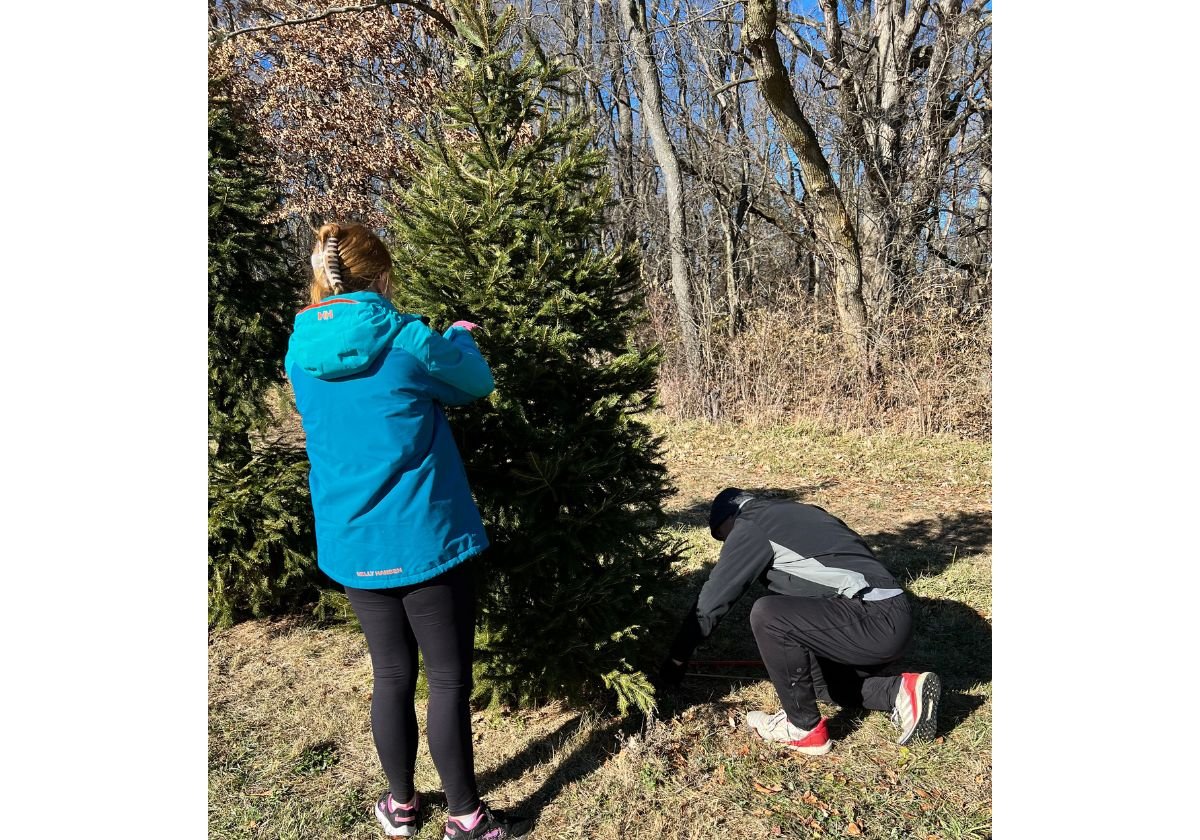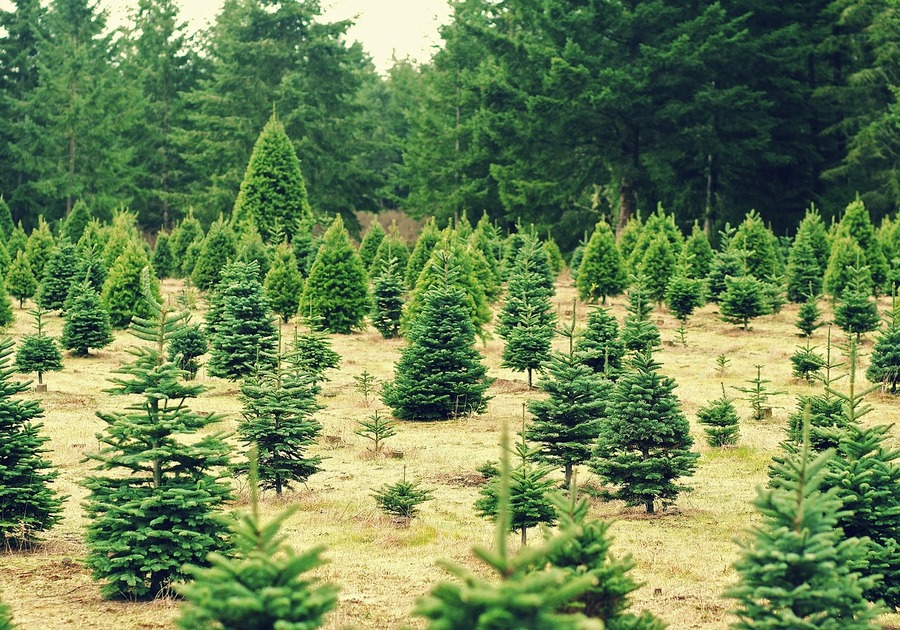We have been cutting down our own Christmas tree for sixteen years. In addition to the fresh pine smell and the fact that we'd have nowhere to store an artificial tree, we love the adventure of it.
Every year the tree is different, with its own character and story as to how we found it. It was the first tree we saw, the ground was super muddy, it was during the first snowfall of the year, or it was bitter cold out. We've had exceptionally tall trees, or exceptionally full. This year's tree is perfect in size and shape, but has a bald spot in the back that almost made us pass her up. Name a year and you'd be surprised at how my husband and kids can tell you the tale of how we found our Christmas tree and what set it apart from other years. My daughter has even taken to sawing an extra sliver off the stumps as mementos.
Of course, we love the horse-drawn wagon rides, petting zoos, and visits with Santa too!
We've had some mishaps over the years. We have had a tree so big we uncovered a nest only after bringing it home. We've had a tree dry out almost immediately. We've accidentally splintered the trunk. We've had a tree fall over breaking our ornaments and pouring its well of water onto our electric train, and we've brought a tree home only to learn it was really two trees entwined together making an exceptionally thick trunk that did not fit into our stand. But we've learned from our mistakes and, dare I say, my husband has become quite the pro.
Perhaps some of our lessons can help you avoid similar pitfalls.
Types of trees:
There are three basic types of Christmas trees of which there are several varieties, but in general you have your Firs, Pines, and Spruces.
Fir Trees, particularly the Fraser Fir which is the most popular Christmas tree, are very fragrant and have softer needles yet weaker branches. They tend to last about five weeks before drying out.
Pine Trees, particularly the Scotch Pine, are less fragrant and have harsher needles, but stronger branches. They can also last four-five weeks, but tend to ooze sticky sap from broken limbs.
Spruce Trees, particularly the White Spruce, are the least fragrant and have harsh needles on moderately strong branches. They last the shortest period - apx. three weeks but will do so with less attention/watering. The White Spruce is popular for it's silvery blue-green color.
Selecting your tree at the farm:
- Check the color and make sure there is not too many brown leaves if any.
- Run your hand down a branch and see if needles fall off.
- Hit the base of the tree to see if a lot of needles fall off.
- If you bend a needle, it should snap in half.
- Consider the shape and fullness.
- Try to find a trunk that is not too thick/heavy.
 |
Cutting down a live tree:
|
Decorating your live tree:
- Wait 24 hours before putting on lights and/or ornaments.
- Be sure your tree is very stable and centered in its stand.
- When screwing stand knobs into tree - be sure not to puncture the bark.
- Wear your work gloves when putting on the lights to prevent being stabbed by needles.
- Check that your lights work before you start putting them on the tree.
- We have found many incandescent light strings only work for one season. (Prompting us to convert to LEDs)
- Working from the bottom up vs. top down:
- If you put your lights on from the top down, you will have a better idea of whether you have enough to finish the job, and/or how many more lights you need. However, since it would be more difficult to plug them in from up high, you won't get a good sense of how it looks along the way.
- If you put your lights on from the bottom up, you can have the lights on as you string them on the tree, giving you a better sense of what it will look like. However, you will have less of a sense of whether you have the right amount.
- If you have a cat at home. Wrap the base in aluminum and/or put orange peels around the base to discourage them from climbing.
- Fun things to add to your tree:
- When you have finished decorating, send us a picture of it at night, USING THIS FORM, and we will add Santa in, so you can show your children on Christmas day that Santa was really there!
Tree removal/disposal:
By the time we remove our tree, the dry needles can be quite prickly. Also while it was tied up when bringing it into the house, now it is completely unfurled and quite wide to get back down the hallway and out the door.
To avoid scratching our walls, we've gotten into the habit of cutting off the branches with hedge cutters and filling trash bags with them before walking only a bare trunk down the hall.
You can dispose of your Christmas trees via the Chicago Christmas Tree Recycling program.



